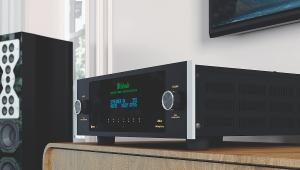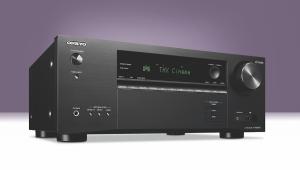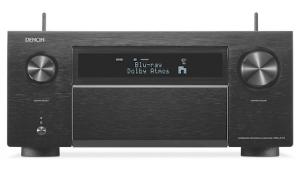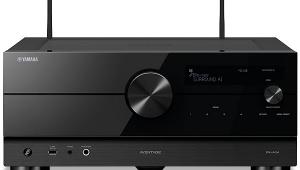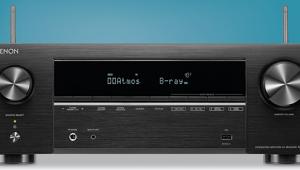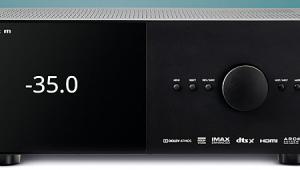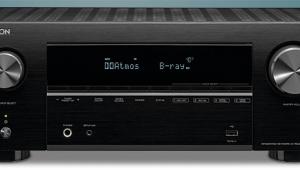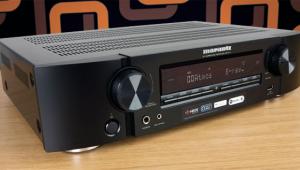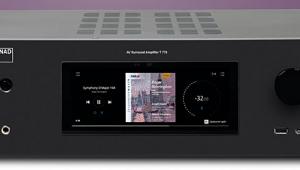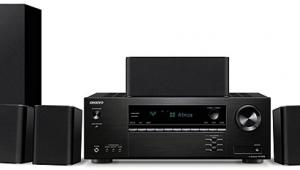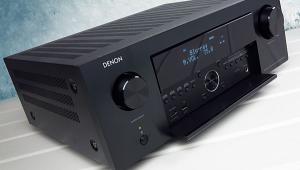Pioneer VSX-1131 review
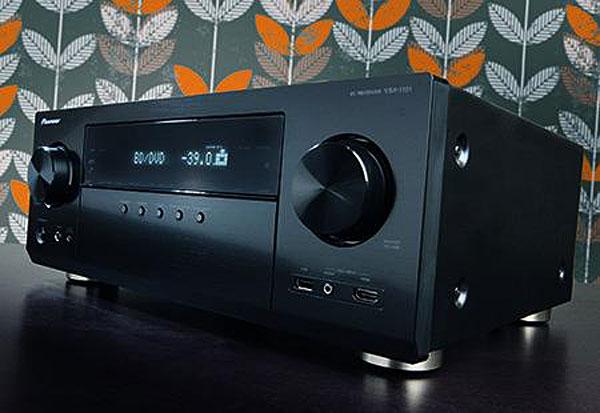
 It's getting hard to find many points of difference between AV receivers around the key £500 mark. Pioneer's VSX-1131, originally priced £550 but available now for less if you shop around, offers a specifications sheet with few surprises, beyond the fact that it's very well featured indeed. Whatever you're hoping to find here, you probably will.
It's getting hard to find many points of difference between AV receivers around the key £500 mark. Pioneer's VSX-1131, originally priced £550 but available now for less if you shop around, offers a specifications sheet with few surprises, beyond the fact that it's very well featured indeed. Whatever you're hoping to find here, you probably will.
First up, connections. Pioneer's mass-market power-pusher features more HDMI inputs than you'll ever need (okay, seven), plus dual HDMI outputs. 4K support extends to 4:4:4 at 60p; HDR passthrough (of the HDR 10 variety anyway, not Dolby Vision) is also present.
Additional connective options include the networking trinity of Ethernet, Wi-Fi and Bluetooth, indicating that this is an AVR with music streaming very much on its mind – Spotify, Deezer, AirPlay, Tidal, TuneIn and Google Play Music are all on the spec sheet. High-res audio sources get a look in, too, with 192kHz/24-bit support for FLAC, ALAC, AIFF and WAV codecs, plus DSD at 2.8/5.6MHz. There's a front-mounted USB input for any portable drives you have loaded with tunes.
Of the more home cinema-oriented features, topping the list is Dolby Atmos bitstream decoding, allowing you to run a 5.1.2 setup via the AVR's seven Direct Energy amplifier channels. The latter are rated at an eye-watering 160W- per-channel, but only into a six Ohm, one-channel, 1kHz measurement with 1% THD. Don't expect that much grunt in real-world multichannel conditions.
Joining Dolby Atmos is support for DTS:X soundtracks, although the firmware update to enable this hadn't been released at the time of review.
Setup is white-gloved by Pioneer's MCACC auto EQ system, for which there's the usual puck-style microphone.
Cosmetically, at first glance there's little to differentiate the VSX-1131 from any of its recent forebears. That's not to say its symmetrical front fascia design, chrome feet and funky black aesthetic (preferable, if you ask me, to the also available silver version) doesn't impress. Around the back, however, there's been a bit of a tidy up and input reshuffle compared to the VSX-1130. Oddly, given the way AVR makers are jettisoning analogue hookups, the VSX-1131 has gained some stereo analogue inputs (although it's lost a composite video out). Of more importance practically, speaker binding posts have been centralised, which is actually very useful if you've struggled in the past with low-down placement.
Another welcome design refresh concerns the remote control. I've found Pioneer AVR handsets in the past to be horrid affairs with any regard for ease-of-use trampled by a desire to offer buttonry for every conceivable feature. Finally, it seems Pioneer has listened to everyone's moaning (and noticed its rivals' revamps) as this handset is severely stripped back. Feeling more akin to a typical TV zapper, it offers large direction keys making menu browsing simple and volume buttons that can be found easily without having to even look. Good job.
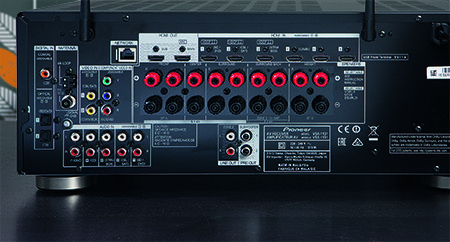
The menus are new too, with neat graphics and a slicker appeal than before. They're unlikely to confuse. As always, Pioneer offers an app that's colourful and fun to play with, but not necessarily the easiest way to drive the AVR.
All set for setup...When it came to setup, I had some issues with this iteration of MCACC. It's blissfully short – by only using one sweep from a lone sitting position – but produced some iffy results in my room. An initial measurement set front speakers as large and the surrounds small (when all were identical Monitor Audio MASS standmounts), and undercut the surround right measurement by a good two metres. When re-run, it set all speakers to large, and reported different distances despite nothing having moved. Hmm. The upshot was I had to go into the manual speaker setup menus to correct these oversights. This is the sort of user interaction that low-price AVR buyers are often hoping to avoid. Furthermore, during movie playback the differences between MCACC on and off proved less forthright than I'm used to. The sonic signature certainly altered, but choosing a preference was a head-scratcher.
Despite this hiccup, the VSX-1131 performs well, with a predilection for bass punch and slick effects delivery. For regular TV watching there's a plethora of DSP modes. Confusingly, Auto Surround mode only applies if a multichannel signal is input – whack the 'SURR' button on the handset to scroll through various flavours of post-processing with Dolby Surround, plus DTS Neo:6 Music and Cinema and various extended mono/stereo options. The differences between many are subtle, but if you want to watch in 5/7.1, you'll need to find one that suits. With a stereo broadcast of Beverly Hills Cop II, Dolby Surround Action did roughly as advertised, routing effects and the synthy score to the surround channels and heightening immersion levels. A rolling undercurrent of LF was sprinkled with crisp trebles and well-integrated dialogue. To make on-the-fly sound adjustments, a pop-up window offers useful centre and subwoofer level tweaks.
Merely an appetiser, though – the VSX-1131 finds a new performance level with lossless multichannel film sound-tracks, putting in a shift that's hard to hate at this price.
Chapter 5 of Denzel Washington revenge thriller The Equalizer opens with a Mercedes sports car revving to a standstill outside a restaurant. The engine growls through the front soundstage, while the subwoofer picks up the associated LFE throb in the soundtrack. Another vehicle tracks off through the left channels. Then it's into the eatery, where the VSX-1131 encases you in the faint clatter of cutlery and muted conversation. Ruskie baddies bark at each other near the bar. This is the calm before the storm, when Denzel reveals himself to be the ruthless killer we'd all suspected. Given licence to let fly, the Pioneer laps it up. As half-a-dozen mobsters are dispatched with gun and knife, there's a well-marshalled combination of sickly flesh-tearing sounds and zippy gun reports.
In fact this AVR seems to revel in bass and big impacts. It's a defining characteristic, but surely a welcome one. Later in The Equalizer, our hero blows up a tanker ship. A slo-mo fireball rolls through my room with remarkable wallop and undulation.
A concern may be that this rampaging low-end and powerful presentation is hiding shortfalls elsewhere. Certainly not with steering or effects separation – the subterranean shootout in Sicario (Dolby Atmos) is well-orchestrated. However, the VSX-1131 can feel a little light on mid-range drive and articulation. Centre-channel dialogue is clean and clear, but I wanted a bit more body to voices. Likewise, with music material, the AVR is more in tune with basslines and rhythmic impact than unearthing subtleties in instrumentation. Def Leppard's rocker Animal sounds stonkingly energetic and drips with swagger, but the guitars need more of a cutting-edge.
Bang on the moneyWell-connected, easy to use, moody-looking and endowed with a dynamic, warmish sound, Pioneer's VSX-1131 is mostly bang on the money. Just be prepared to double-check what MCACC instigates and trade-off some sonic balance and nuance in favour of high-octane impact.
Specification
Dolby Atmos: Yes DTS:X: Yes – via firmware update THX: No Power output (claimed): 7 x 160W (into 6 Ohms) HDMI: 7 x inputs; 2 x outputs AV inputs: 3 x digital audio (2 x optical and 1 x coaxial); component video; 2 x composite video Analogue multichannel input: No Multichannel output: No. Multiroom: Yes. Zone 2 Video upscaling: Yes. To 2,160p Dimensions: 435(w) x 370(d) x 173(h)mm Weight: 10kg
Features: Ethernet; Wi-Fi; Bluetooth; USB; MCACC auto EQ/setup; iControl AV5 app; AM/FM tuner; AirPlay; Spotify; TuneIn radio; dual subwoofer outputs; DSD 2.8/5.6MHz playback; hi-res FLAC, ALAC, AIFF and WAV support; 384kHz/32-bit DAC; DSP sound modes; Advanced Sound Retriever; 4K/HDR passthrough with HDCP 2.2 support; FireConnect multiroom support
 |
Home Cinema Choice #351 is on sale now, featuring: Samsung S95D flagship OLED TV; Ascendo loudspeakers; Pioneer VSA-LX805 AV receiver; UST projector roundup; 2024’s summer movies; Conan 4K; and more
|





